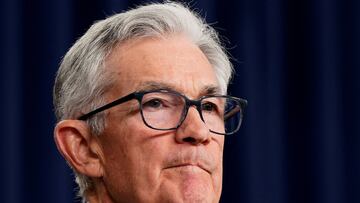How does the latest inflation data affect US interest rates according to Powell?
Recent inflation data has shown prices going in the opposite direction of what Fed policymakers were aiming for changing their stance on interest rates.

The Federal Reserve began raising interest rates in March 2022 to slow accelerating inflation in the wake of the pandemic. After eleven rate hikes policymakers paused as the higher borrowing costs looked to be having the desired effect.
However, after a rapid cooling of inflation, recent economic data has shown a “lack of progress” so far this year. Speaking at a forum in Washington, Fed Chair Jerome Powell suggested that rate cuts will not be coming as soon as expected.
How does the latest inflation data affect US interest rates according to Powell?
“The recent data have clearly not given us greater confidence and instead indicate that it’s likely to take longer than expected to achieve that confidence,” Powell said at the forum on Tuesday. “Right now, given the strength of the labor market and progress on inflation so far, it’s appropriate to allow restrictive policy further time to work and let the data and the evolving outlook guide us.”
This is likely to be the last time he will speak publicly before policymakers’ upcoming 30 April-1 May meeting. While they weren’t expected to lower rates, which are currently at a two-decade high, at that time, there had been hope the following meeting in June would end with the first quarter-percentage-point cut of three in total before the end of the year.
First rate cut not likely until September
After Powell and other Fed officials have signaled that borrowing costs will have to stay high for longer, analysts and investors are now forecasting that the first cut could come in September at the soonest. Chances of a follow-up rate reduction this year are looking slimmer.
The US central bank has been trying to get inflation back to its 2 percent target. However, the Consumer Price Index data from March ticked up to 3.5 percent from 3.2 percent the month before on an annual basis.
The core Personal Consumption Expenditure price index, the Fed’s preferred measure, was 2.8 percent in February. The next round of data will be released on 26 April predicted to come in at 2.7 percent.






